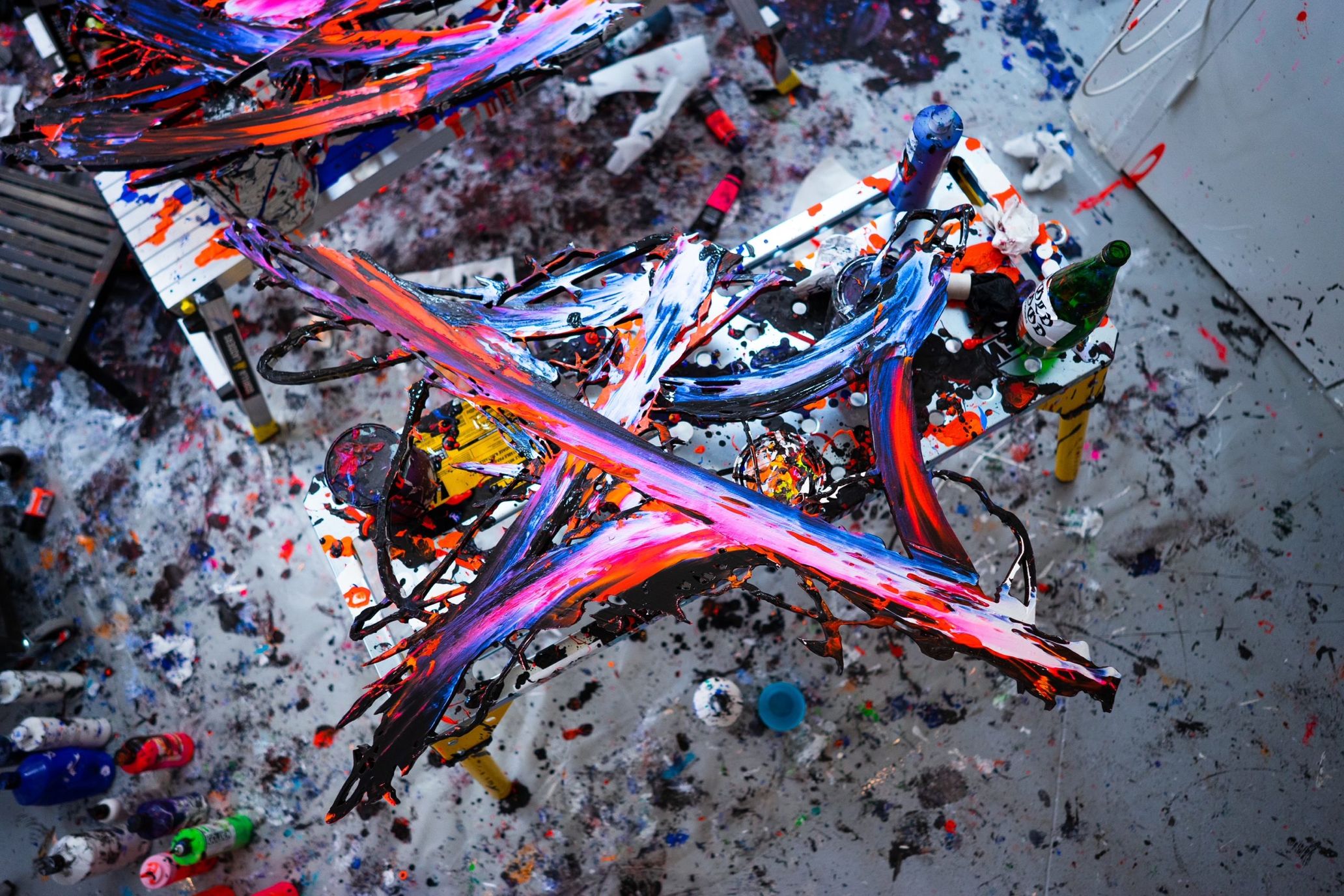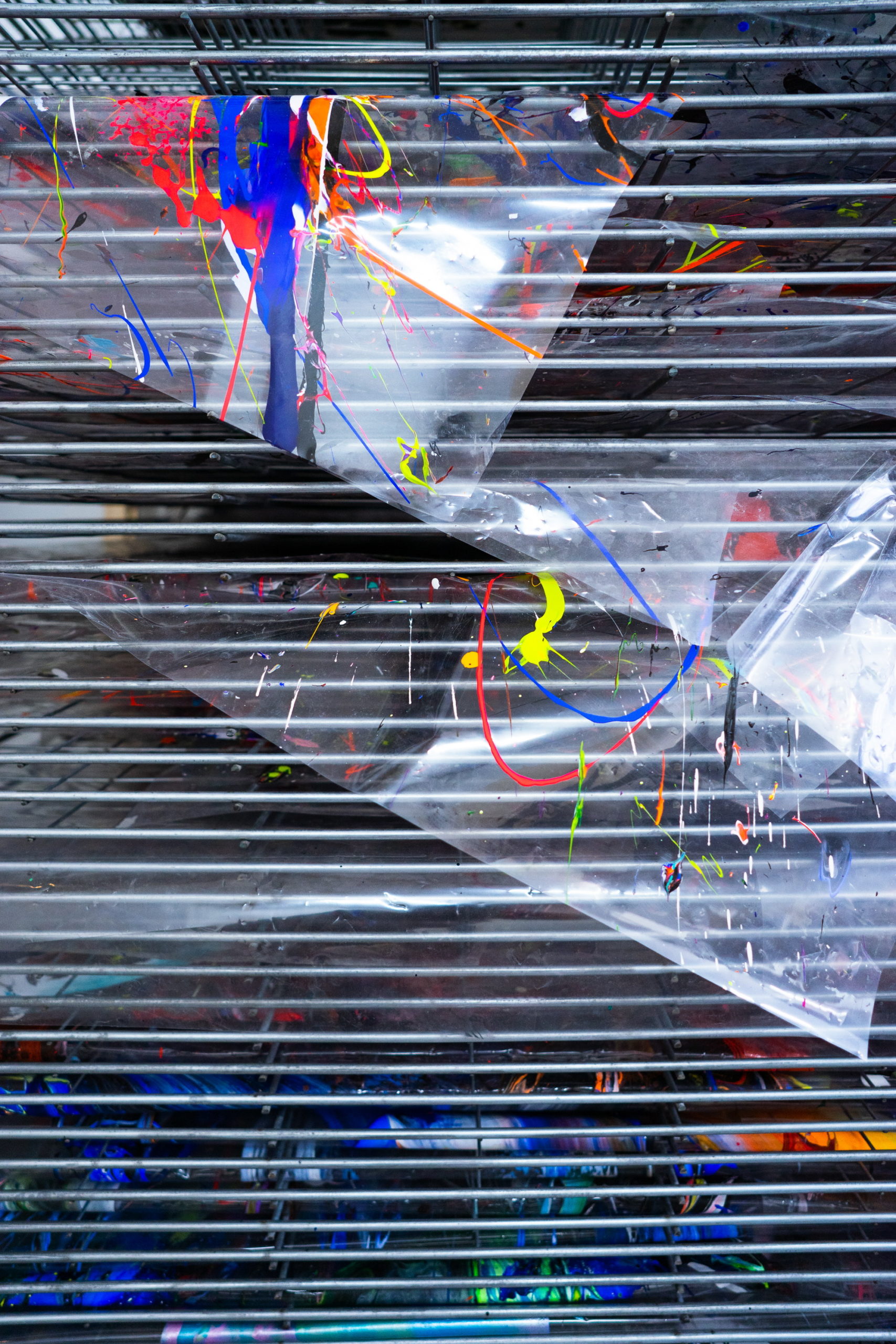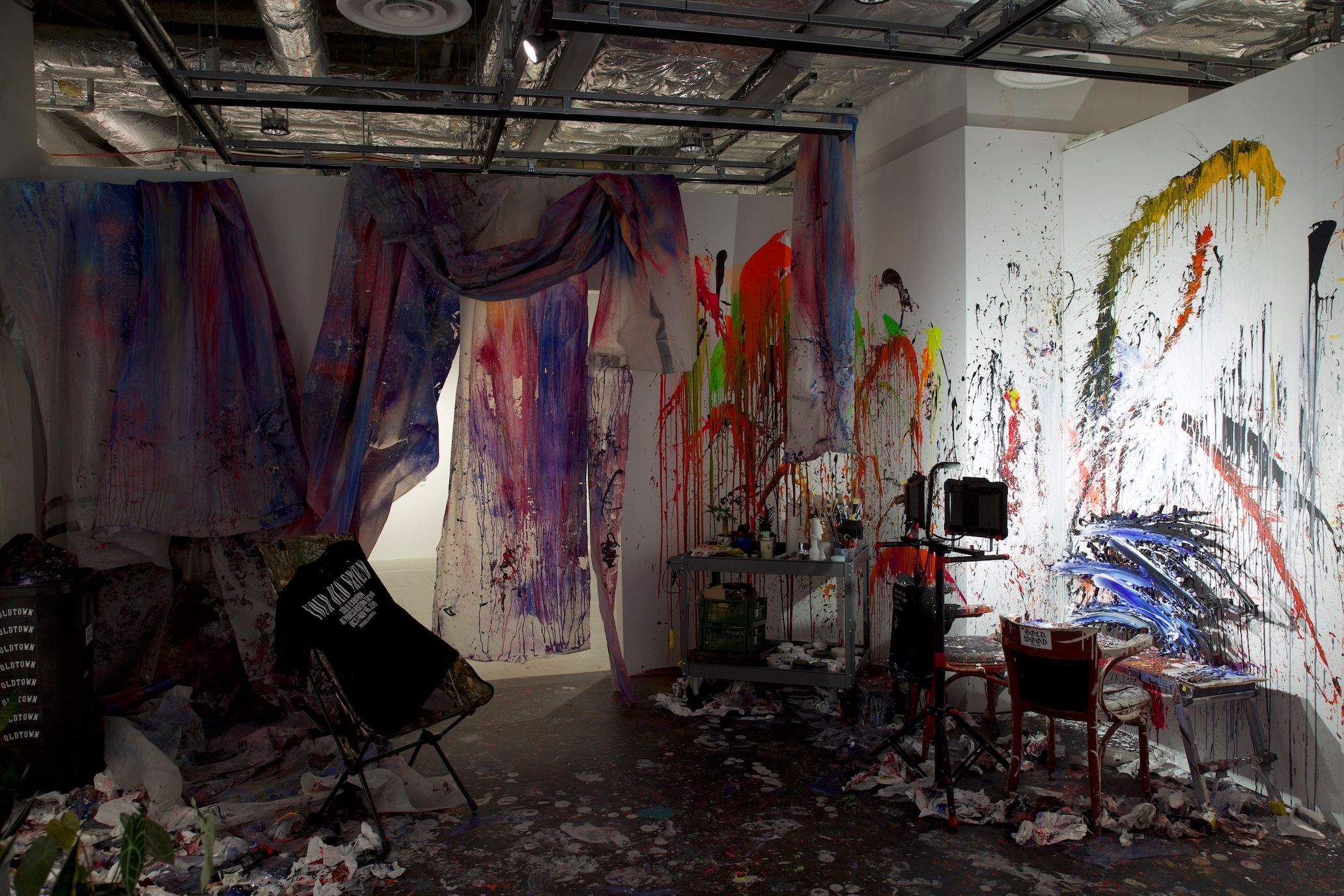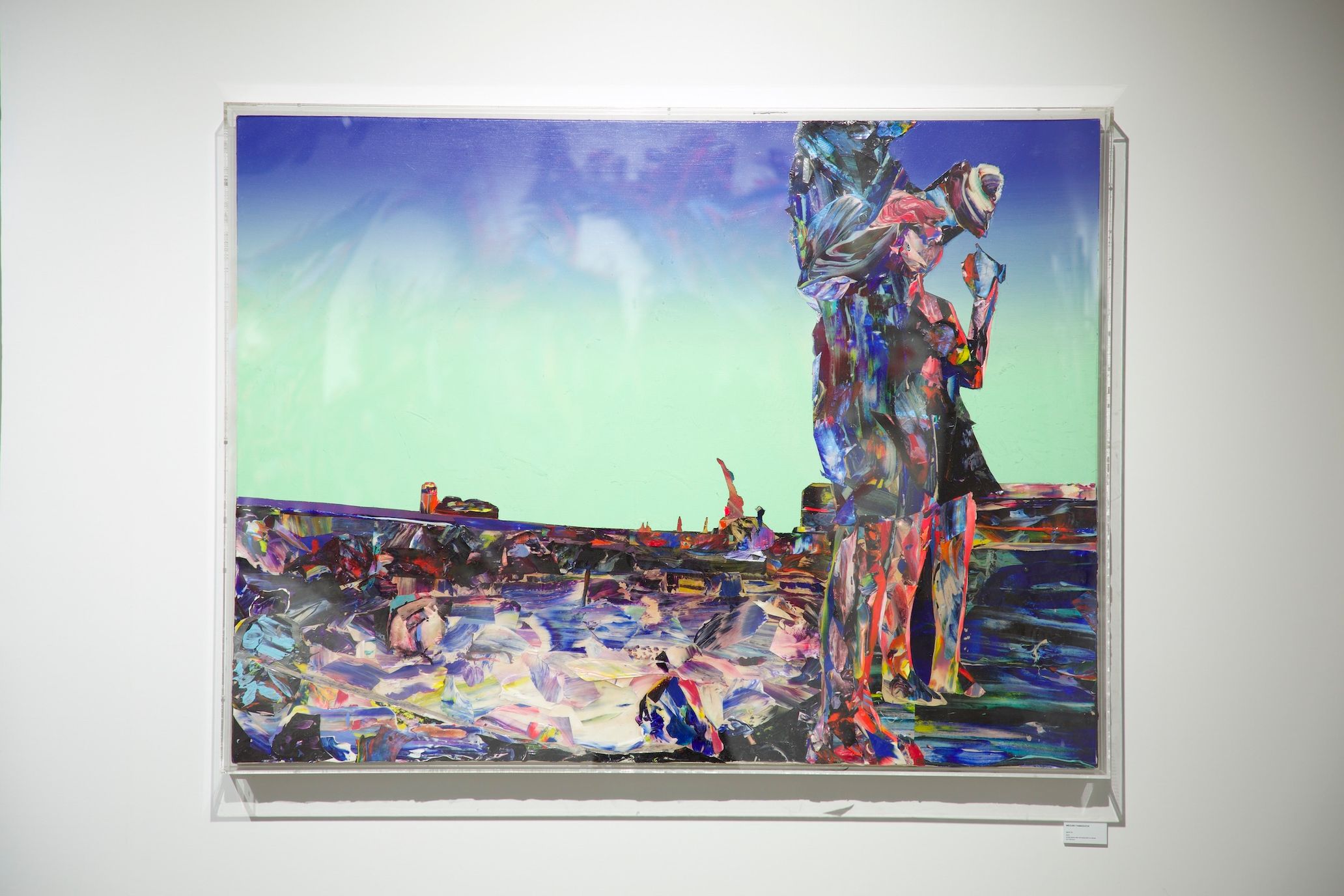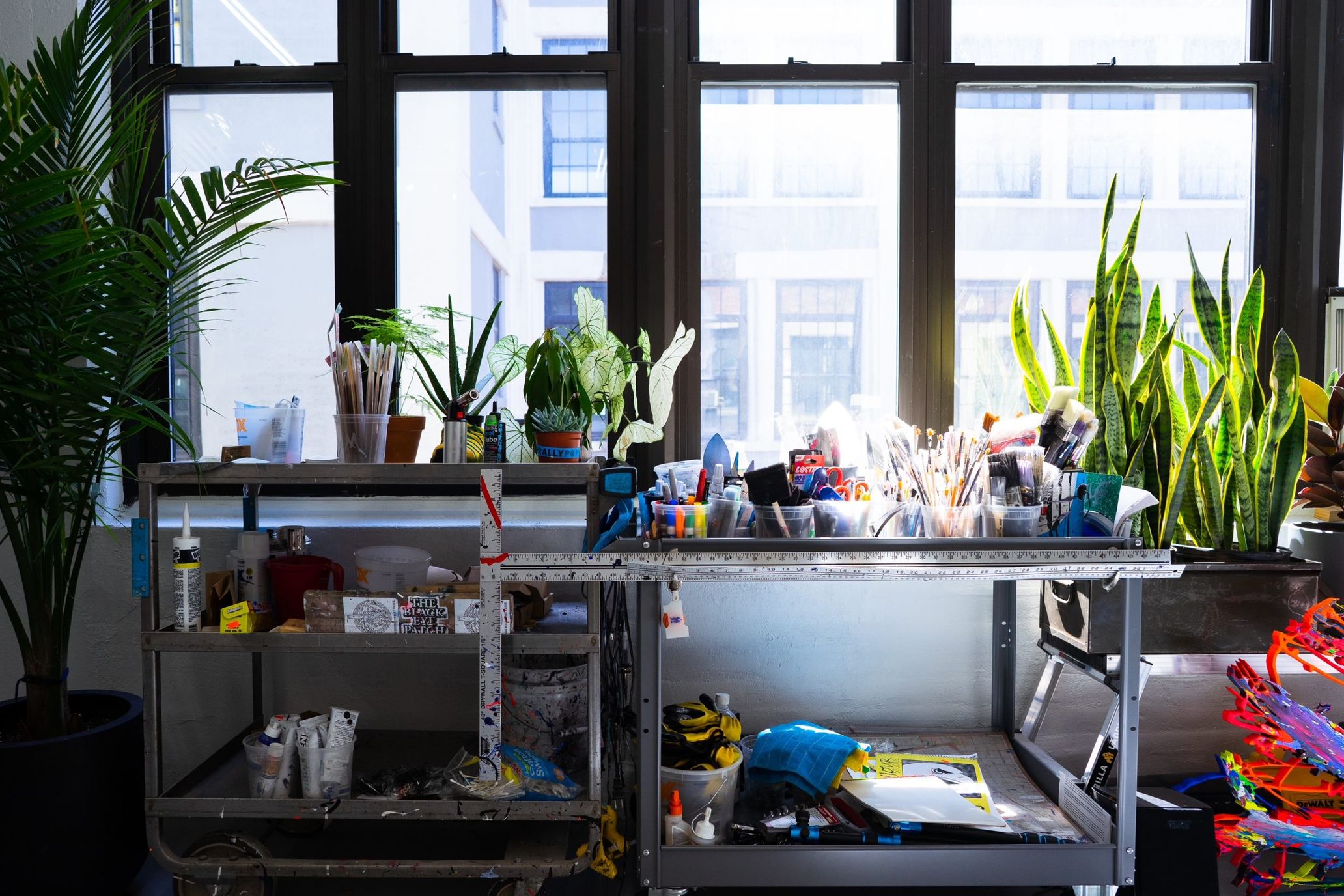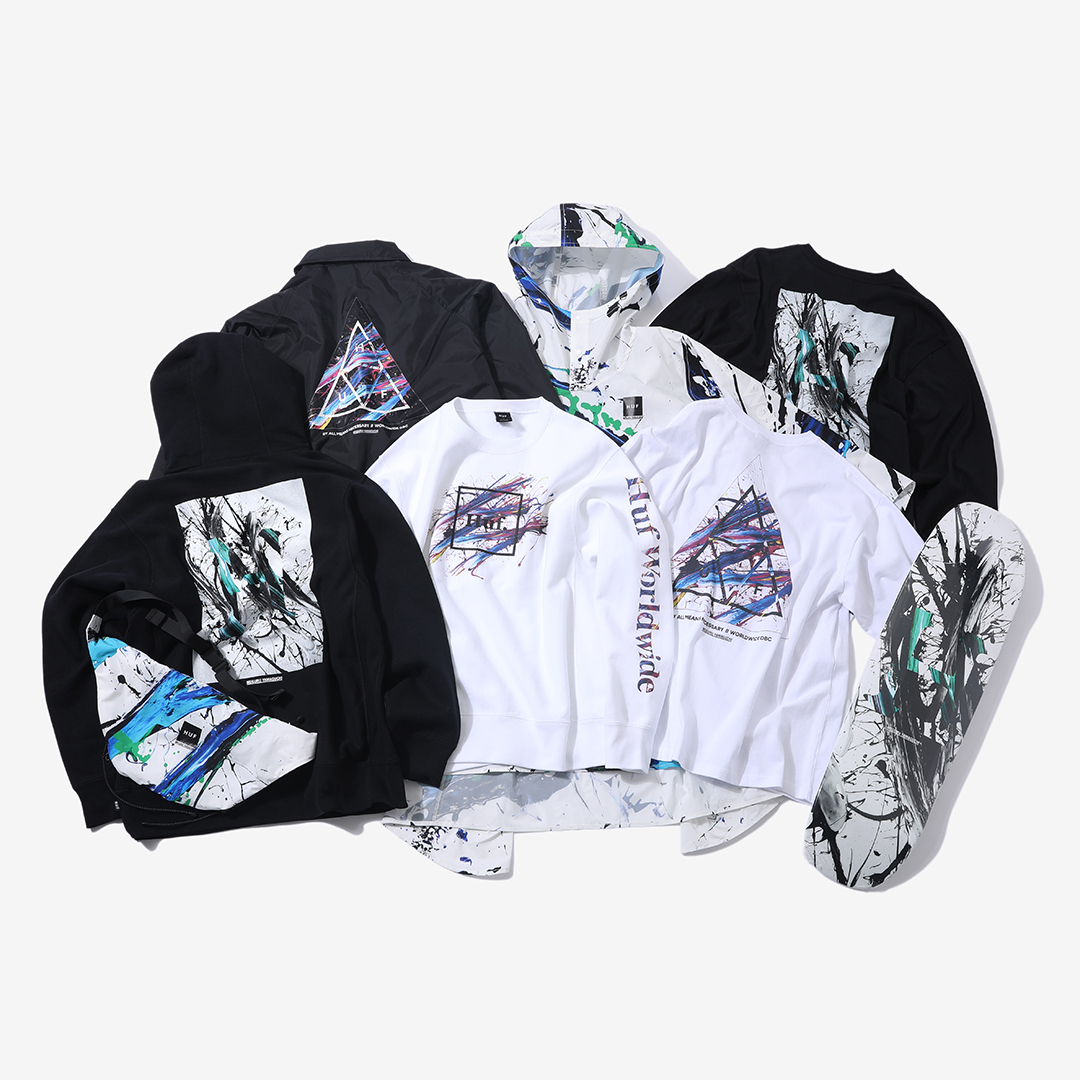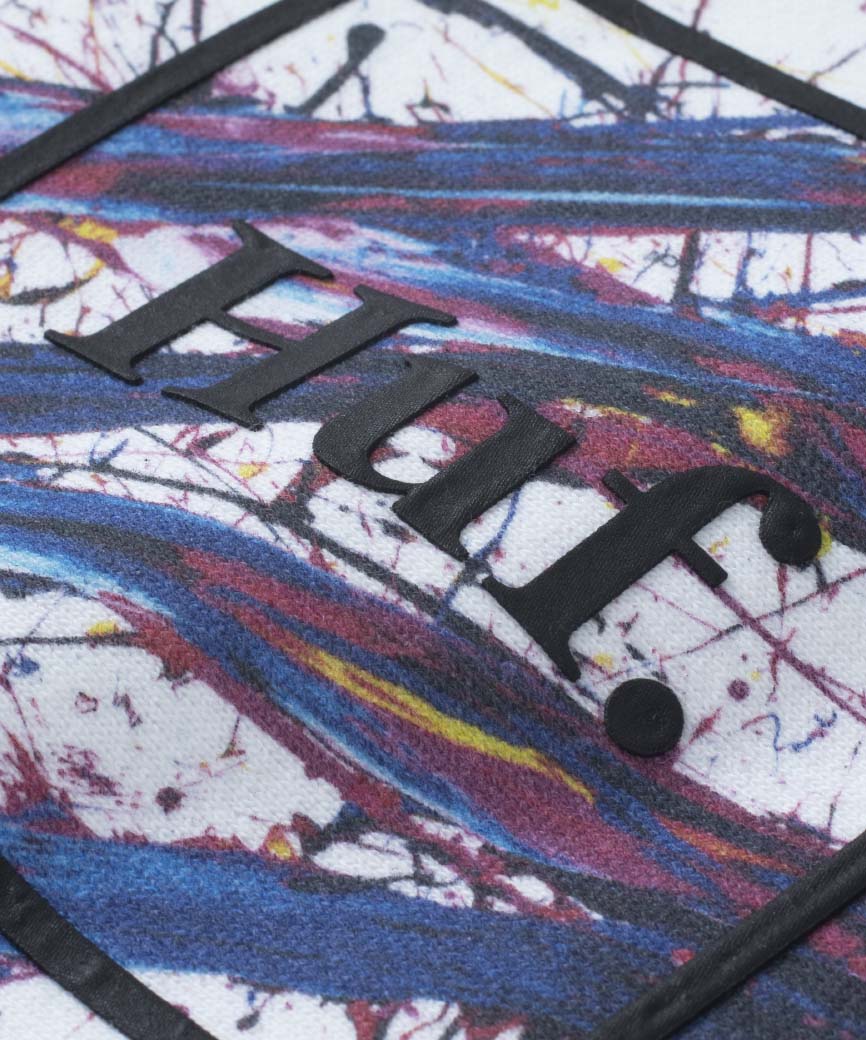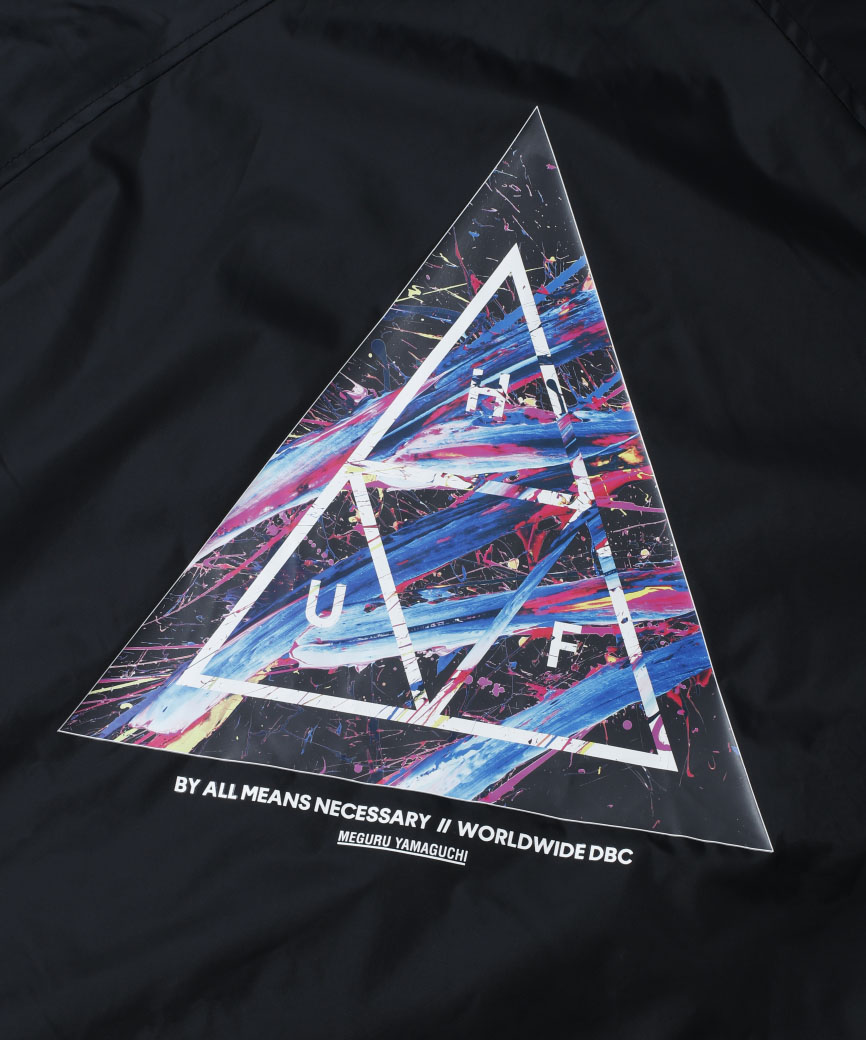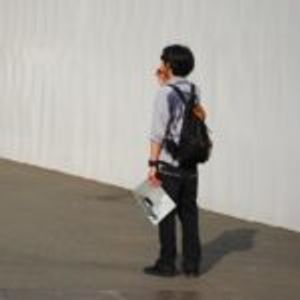The brush strokes used in Meguru Yamaguchi’s artwork leave a powerful impression on whoever comes across it. There’s no way to forget it. The contemporary artist has collaborated with the likes of HUF, Nike, and Issey Miyake Men. From October 31st to November 16th of this year, he held an exhibition titled Your Old Friend at Parco Museum Tokyo, where he displayed both new and old pieces. Now that his exhibition, which fused the past and present, is over, we asked Yamaguchi to reflect on his art background and what sort of feelings he puts into his artwork.
Learning about art from Urahara’s street culture
――Could you start by talking about your art background? I heard you’ve been influenced by artists who had their start in the street culture scene.
Meguru Yamaguchi (Hereinafter Meguru): I initially studied calligraphy, acrylic painting, and oil painting. Regarding artists from street culture, I loved artists like KAWS, Todd James, Dash Snow, Futura, and Ryan McGinley. I can’t say everyone in the scene inspired me, but as a whole, New York’s downtown street scene profoundly influenced me.
――How did you discover street art?
Meguru: From street fashion. I discovered brands like RECON in Urahara (Harajuku’s backstreets) and other Tokyo cultures when I was in high school. That informed me, massively.
――What brands did you like at the time?
Meguru: I would check out different brands here and there, but I especially liked Empire and the early days of Swagger and Devilock. I also liked Revolver and Suiseeda, which was a brand by TOSHI-LOW of BRAHMAN. I think anybody that would hang out in Shibuya, Harajuku, Daikanyama, and Ebisu in the early 2000s, went to this brand’s store. Fashion is the clearest and most direct style of self-expression, yeah? Wearing clothing with a message was an act of self-assertion, and this phenomenon stood out during that era. Back then, I expressed myself through fashion because it takes a long time to learn how to draw well and develop a robust foundation. It’s also hard to draw an image you have in your mind. So, fashion was the only way I could express myself.
――But you pursued art instead of fashion. How did that happen?
Meguru: I didn’t strive to work in fashion because of my father. He founded the brand, Ozone Rocks (Ozone Rocks was integrated into Ozone Community, which now runs Hysteric Glamour), and it seemed like it was a lot of hard work. I grew up watching him, so I felt like being a fashion designer wasn’t meant for me, even as a small child. I realize now that art is just as demanding as designing (laughs). I’ve always enjoyed drawing, and when I was in the 12th grade, I decided to apply to an art school wishing to become a painter. And so, I started going to a prep school for art, but it differed vastly from my image of the art world.
――Could you expand on that?
Meguru: Even back then, I felt like street culture and art were going to merge one day, and I liked contemporary artists who had a street culture background. I went to prep school because I wanted to do that type of art in the future. But I got the vibe that it wasn’t the kind of school where you could casually talk about street art (laughs). I ended up studying the classic way to sketch a drawing. For four years, I diligently learned about what makes a good oil painting or how to draw a good still-life painting. Unfortunately, I couldn’t get into Geidai (Tokyo University of the Arts), and when I was wondering what to do next, I thought, “I should go to New York.” That was in the year 2007.
――Why did you think of going to New York?
Meguru: One of the reasons was because I looked up to New York-based artists. But I wanted to go there to work as Matzu-san’s (artist Tomokatsu Matsuyama) assistant. I helped with his exhibition in Tokyo in 2005. So, I went to New York to be his assistant for five years and became independent after that. It took me about another five years for people to finally start recognizing my work. And here I am today. If you include my school days, it took me about 15 years before I got my break.
Break the rules once you know them well — In pursuit of art that goes outside the box
――I heard you developed your style during your assistant days after spotting acrylic paint peeling off from the curing sheet in the studio.
Meguru: Exactly. I have a different technique now. But for a while, I used to paint as if I were solving a puzzle. I personally see OUT OF BOUNDS, one of the artworks I had on display at Parco, as my breakthrough artwork. It’s not a two-dimensional piece, but a sculptural one. The concept was to “go outside the box.”
――I’m interested in hearing about what you mean by “go outside the box.”
Megurui: When I look back on my life, I realize that I’ve never been inside a box, whether that’s regarding society, groups, or school. To put it differently, I couldn’t fit into any box. I went through a phase where I thought about this topic and didn’t want to draw something within the canvas frame. Then one day, it occurred to me; “I’m going to destroy this box! Let’s see what happens then!” I remember watching Taro Okamoto saying, “try going outside the lines more!” to Jimmy Onishi on TV a long time ago. Those words never left my memory. I felt like I could draw freely and without restraint, once I went beyond the canvas frame, and that’s how the OUT OF BOUNDS series was born. It’s impossible to go back and check the footage where Taro Okamoto-san said those words, but I interpreted them in my way and tried to express it.
――I see. You built a new medium of expression by dismantling preconceived notions.
Meguru: Yes. But I do think it’s essential to learn the basics properly first. Then you could deviate from the rules and tear the boundaries down. In my case, I studied how to draw the classic way for four years, and now I use that experience to break the rules and pursue other potential modes of expression. This is a personal matter but, I actually couldn’t come back to Japan during the years between 2010 and 2020 due to various reasons. So, maybe a part of me wanted to go beyond national borders too. This is the first time I came back in ten years.
ーーI get the impression that you use an abundance of blues, white, and black in your art. But I saw that you incorporated red tones for Your Old Friend, which was new for you.
Meguru: That was something I made recently, and I think the pandemic influenced it. I used a lot of red in my artwork this year. Once the pandemic started, there was an anger budding inside of me. During the two-month lockdown in New York, that anger only grew. I started to want to create more intense pieces instead of using colors like black and blue, as I typically would. I naturally gravitated towards colors with stronger contrasts such as red, metallic blue, neon shades, and black.
Being glad for keeping faith in street culture and contemporary art
ーーYou’ve spent over ten years in New York, but does New York play a significant role in how you create your art?
Meguru: I feel like New York has less noise compared to Tokyo. That makes it easier for me to concentrate on my work. Even before the pandemic, I would usually only go between the studio and my home. I never really went out. New York is like the Hyperbolic Time Chamber from Dragon Ball Z. You could practice your craft all you want in the city, and I think I was able to produce a lot of artwork precisely because of the location.
ーーSo, your daily life consisted of you creating art studiously.
Meguru: You’re exactly right. Because everyone comes from so many different places, you start to think, “what am I?” when you live in that environment. Like, “what are my roots?” and “what is it about my hometown, Tokyo, that I can be proud of?” I made my art with the thought, “what can I, a Tokyo-born Japanese person in New York, present to the world?” in the back of my mind. That was something I couldn’t do in Tokyo.
ーーGoing back to Your Old Friend, why did you decide to do it at Parco?
Meguru: Parco is the place KAWS, an artist I love, had his show 19 years ago. That’s where I saw his work. Also, I came back to Japan for the first time in ten years; I wanted to mark that turning point by hosting an exhibition at Parco. They have always been a fashion, art, cultural hub right at the heart of Shibuya. I have so much respect for them, and I hope the exhibition could connect to the youth of tomorrow.
ーーYou’ve collaborated with numerous fashion brands so far. Recently, your joint collection with HUF was released.
Meguru: It’s true, I’ve collaborated with quite a few brands. Fundamentally, I do it in hopes of many people seeing my work through such collaborations. First of all, it’s a great honor to have opportunities to work with street fashion, as it’s something I’ve loved for a long time. Many contemporary artists work in art and fashion today; the mix of the two cultures has become a global phenomenon by now. What I’ve been thinking about since high school has become a reality, so I’m glad I’ve kept my faith in street culture all this time. It makes my heart warm to think the two spheres are colliding.
ーーYou can say that about the fashion scene as well. I feel like the line between street culture, fashion, and art is disappearing. Lastly, what projects do you have in the works? What do you want to work on?
Meguru: I’m planning on hosting exhibitions in Hong Kong, Shanghai, Taiwan, and other Asian countries. I’m planning on having a big one in Tokyo, too. I want to make artwork that is more three-dimensional. I’m already creating sculptures that go beyond the frame, so to speak, but it’s still rooted in a two-dimensional medium. To create more three-dimensional art with brush strokes; that’s what I want to do.
Meguru Yamaguchi
Born in 1984, Meguru Yamaguchi is a Brooklyn-based contemporary artist. He is known for his artwork that uses brush strokes. Meguru Yamaguchi has collaborated with many fashion brands and is amassing massive attention from the art world and the fashion world.
http://www.meguruyamaguchi.com/
Instgram:@meguruyamaguchi
Text Ryo Tajima
Translation Lena Grace Suda


